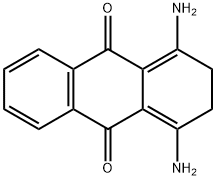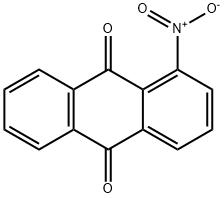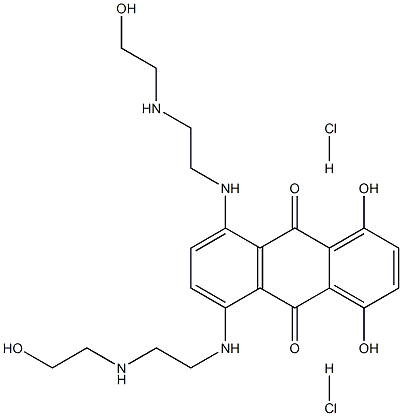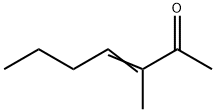1,4-Diamino-2,3-dihydroanthraquinone
- CAS NO.:81-63-0
- Empirical Formula: C14H12N2O2
- Molecular Weight: 240.26
- MDL number: MFCD00035689
- EINECS: 201-367-1
- SAFETY DATA SHEET (SDS)
- Update Date: 2024-12-18 13:37:16

What is 1,4-Diamino-2,3-dihydroanthraquinone?
Description
1,4-Diamino-2,3-dihydroanthraquinone (DDA) is a dark purple needle crystal. It is insoluble in water, but soluble in benzene, pyridine, nitrobenzene, and aniline. Can be used to prepare purple smoke bombs. It is highly susceptible to oxidation to 1,4-diaminoanthraquinone (DAA) in the air or during smoke bomb burning. DDA is a weak mutagen in the Salmonella Reversin Assay, and a combustion or oxidation product in the same test, and DAA is a strong mutagen.
Chemical properties
Dark Greenish Brown Solid
The Uses of 1,4-Diamino-2,3-dihydroanthraquinone
An anthraquinone-derived dye.
The Uses of 1,4-Diamino-2,3-dihydroanthraquinone
Leuco-1,4-diaminoanthraquinone (leucamine) is an important precursor for 1,4-diaminoanthraquinone.
The Uses of 1,4-Diamino-2,3-dihydroanthraquinone
An anthraquinone-derived dye. A product from the combustion of red and violet smoke mixtures.
What are the applications of Application
1,4-Diamino-2,3-dihydroanthraquinone is an anthraquinone-derived dye
Properties and Applications
dark red light purple.
Properties of 1,4-Diamino-2,3-dihydroanthraquinone
| Melting point: | >190°C (dec.) |
| Boiling point: | 382.97°C (rough estimate) |
| Density | 1.1613 (rough estimate) |
| refractive index | 1.6180 (estimate) |
| storage temp. | -20°C Freezer, Under Inert Atmosphere |
| solubility | DMSO (Slightly), Methanol (Slightly) |
| form | Solid |
| pka | 5.11±0.20(Predicted) |
| color | Very Dark Green to Very Dark Brown |
| InChI | InChI=1S/C14H12N2O2/c15-9-5-6-10(16)12-11(9)13(17)7-3-1-2-4-8(7)14(12)18/h1-4H,5-6,15-16H2 |
| CAS DataBase Reference | 81-63-0(CAS DataBase Reference) |
| NIST Chemistry Reference | 9,10-Anthracenedione, 1,4-diamino-2,3-dihydro-(81-63-0) |
| EPA Substance Registry System | 9,10-Anthracenedione, 1,4-diamino-2,3-dihydro- (81-63-0) |
Safety information for 1,4-Diamino-2,3-dihydroanthraquinone
| Signal word | Warning |
| Pictogram(s) |
 Exclamation Mark Irritant GHS07 |
| GHS Hazard Statements |
H302:Acute toxicity,oral H317:Sensitisation, Skin |
| Precautionary Statement Codes |
P280:Wear protective gloves/protective clothing/eye protection/face protection. |
Computed Descriptors for 1,4-Diamino-2,3-dihydroanthraquinone
| InChIKey | SSGALQHXKMAJTL-UHFFFAOYSA-N |
| SMILES | C1(N)=C2C(C(=O)C3=C(C2=O)C=CC=C3)=C(N)CC1 |
New Products
(S)-3-Aminobutanenitrile hydrochloride 4-Methylphenylacetic acid N-Boc-D-alaninol N-BOC-D/L-ALANINOL Tert-butyl bis(2-chloroethyl)carbamate 3-Morpholino-1-(4-nitrophenyl)-5,6-dihydropyridin- 2(1H)-one Furan-2,5-Dicarboxylic Acid Tropic acid 1-Bromo-3,5-Di-Tert-Butylbenzene S-2-CHLORO PROPIONIC ACID ETHYL ISOCYANOACETATE 2-Bromo-1,3-Bis(Dimethylamino)Trimethinium Hexafluorophosphate 4-IODO BENZOIC ACID 3-NITRO-2-METHYL ANILINE 1-(2,4-DICHLOROPHENYL) ETHANAMINE (2-Hydroxyphenyl)acetonitrile 4-Bromopyrazole 2-(Cyanocyclohexyl)acetic acid 4-methoxy-3,5-dinitropyridine 1-(4-(aminomethyl)benzyl)urea hydrochloride 2-aminopropyl benzoate hydrochloride diethyl 2-(2-((tertbutoxycarbonyl)amino) ethyl)malonate tert-butyl 4- (ureidomethyl)benzylcarbamate Ethyl-2-chloro((4-methoxyphenyl)hydrazono)acetateRelated products of tetrahydrofuran








You may like
-
 2033-24-1 98%View Details
2033-24-1 98%View Details
2033-24-1 -
 42831-50-5 5-METHYLISOXAZOLE-4-CARBOXYLIC ACID 98%View Details
42831-50-5 5-METHYLISOXAZOLE-4-CARBOXYLIC ACID 98%View Details
42831-50-5 -
 1975-50-4 98%View Details
1975-50-4 98%View Details
1975-50-4 -
 2-HYDROXY BENZYL ALCOHOL 98%View Details
2-HYDROXY BENZYL ALCOHOL 98%View Details
90-01-7 -
 2-Chloro-1,3-Bis(Dimethylamino)Trimethinium Hexafluorophosphate 221615-75-4 98%View Details
2-Chloro-1,3-Bis(Dimethylamino)Trimethinium Hexafluorophosphate 221615-75-4 98%View Details
221615-75-4 -
 61397-56-6 CIS BROMO BENZOATE 98%View Details
61397-56-6 CIS BROMO BENZOATE 98%View Details
61397-56-6 -
 14714-50-2 (2-Hydroxyphenyl)acetonitrile 98+View Details
14714-50-2 (2-Hydroxyphenyl)acetonitrile 98+View Details
14714-50-2 -
 118753-70-1 98+View Details
118753-70-1 98+View Details
118753-70-1